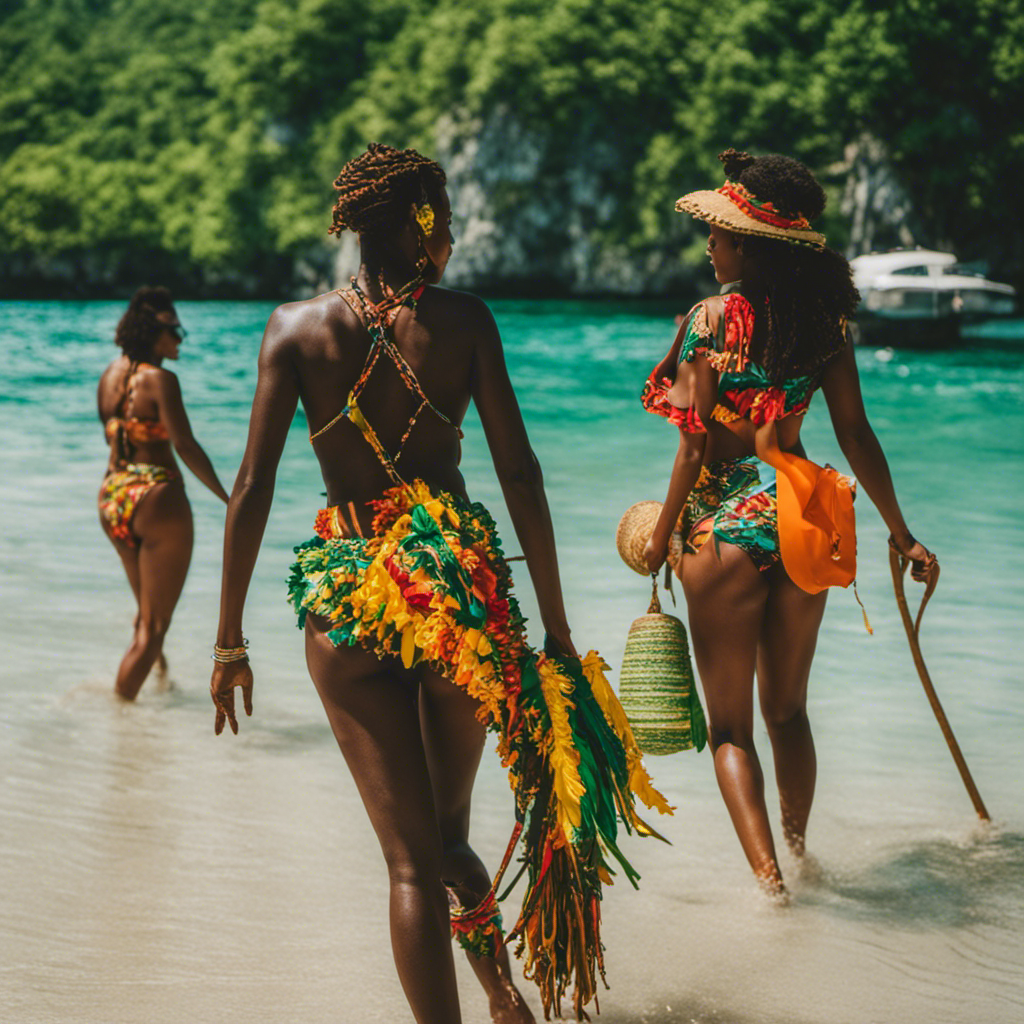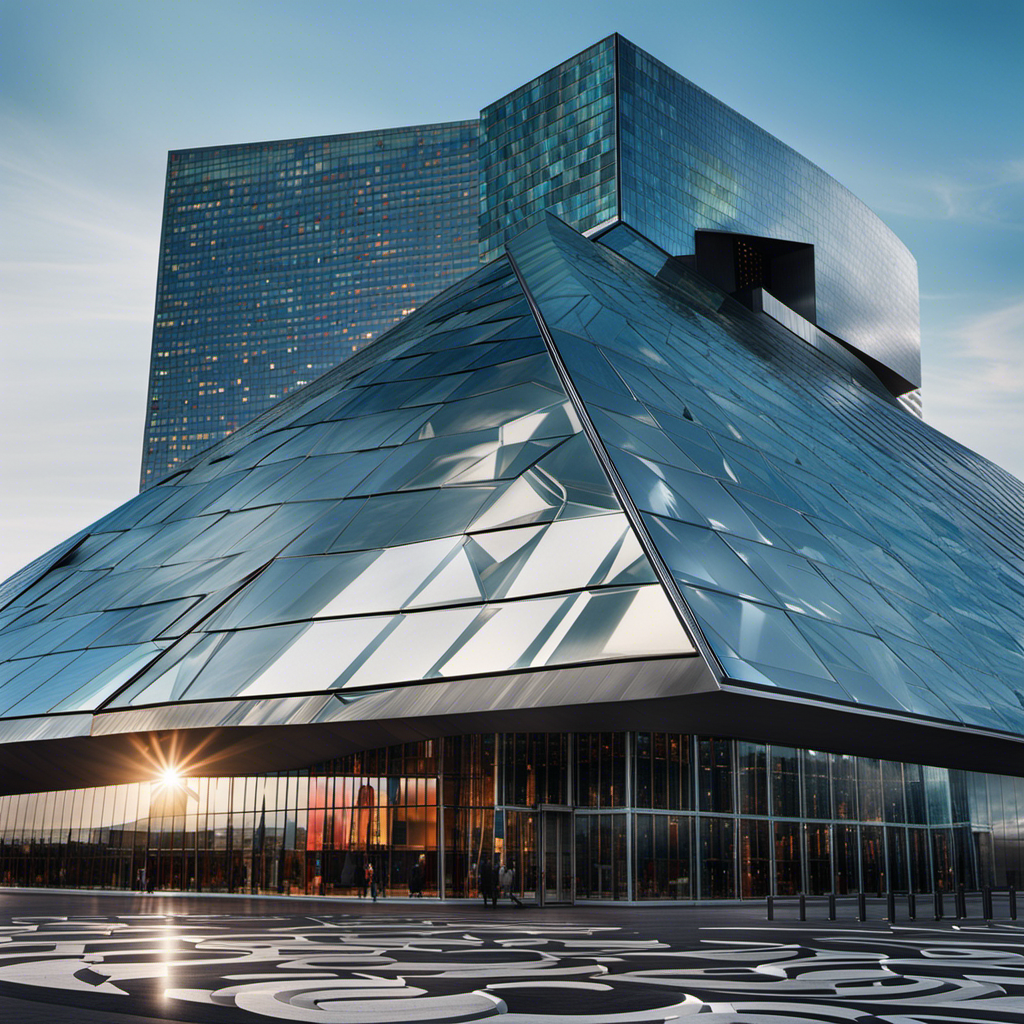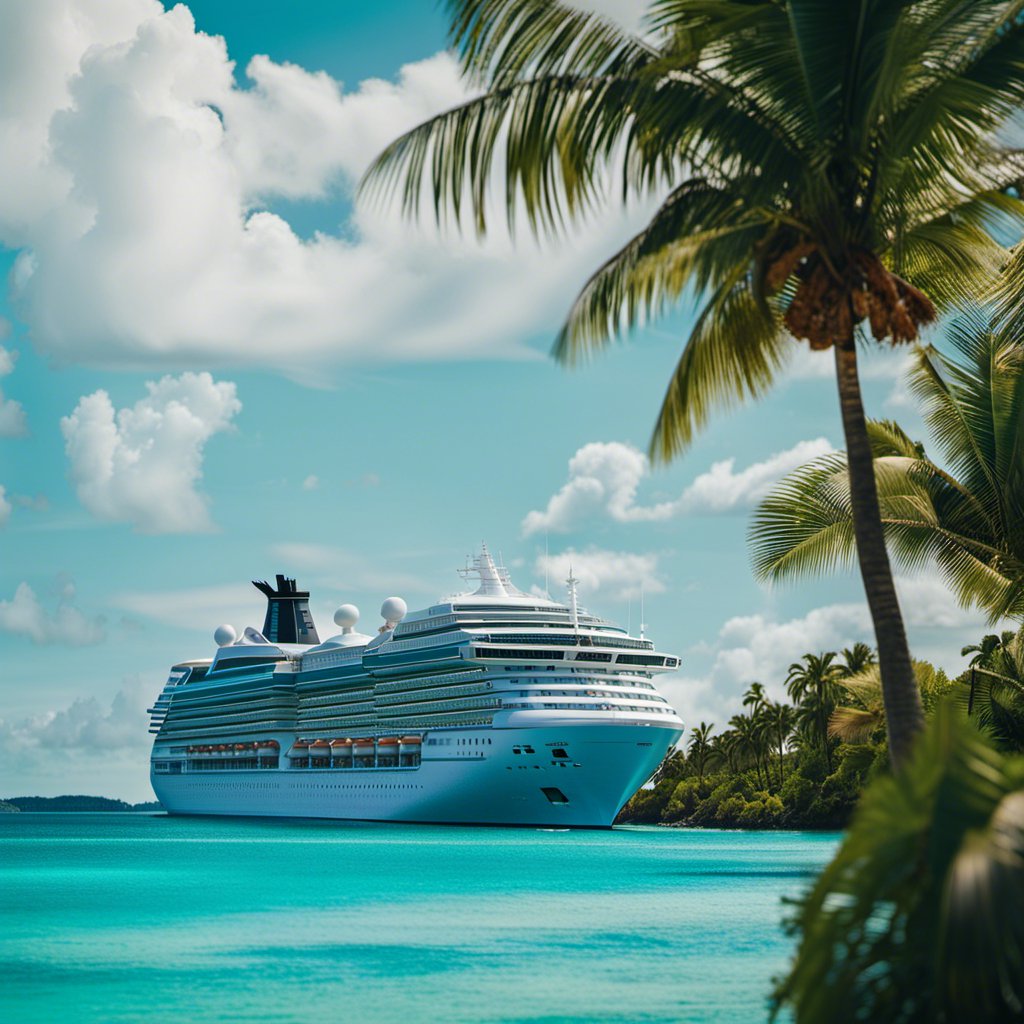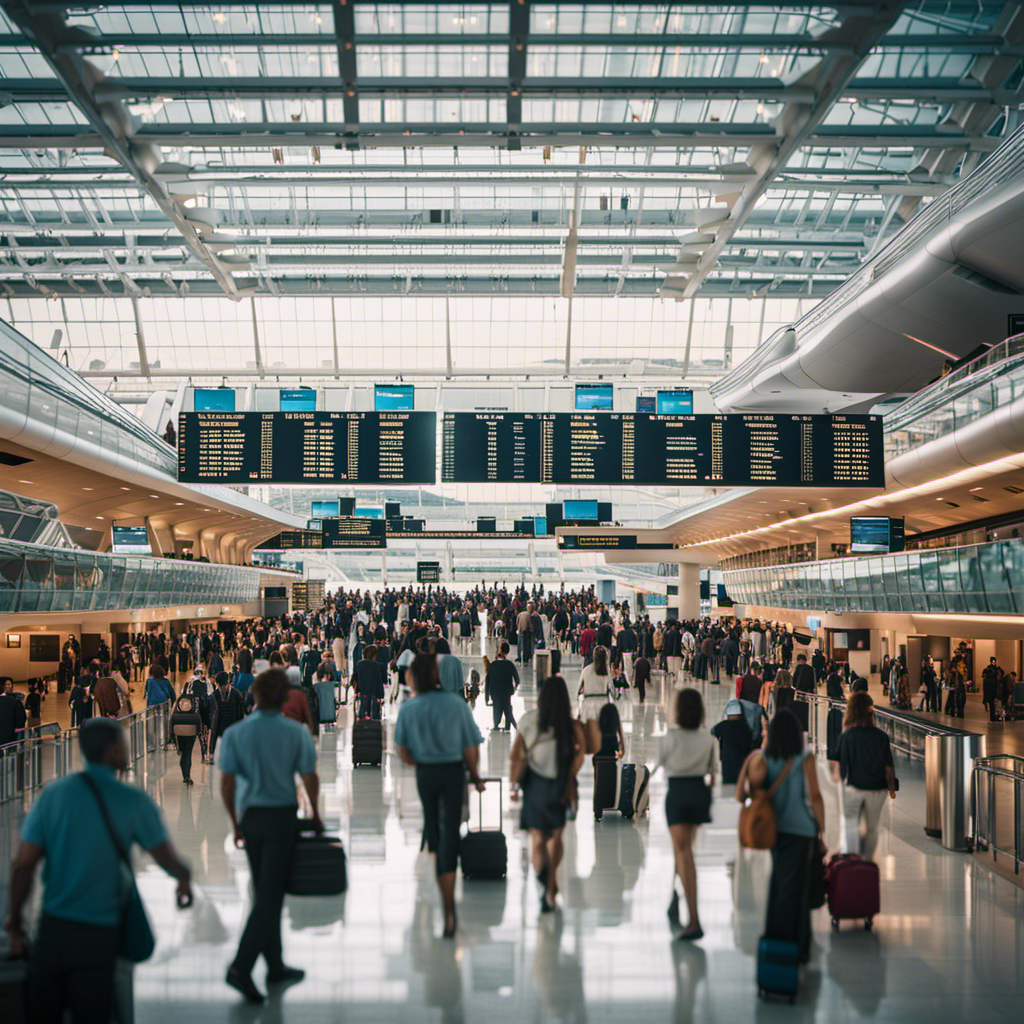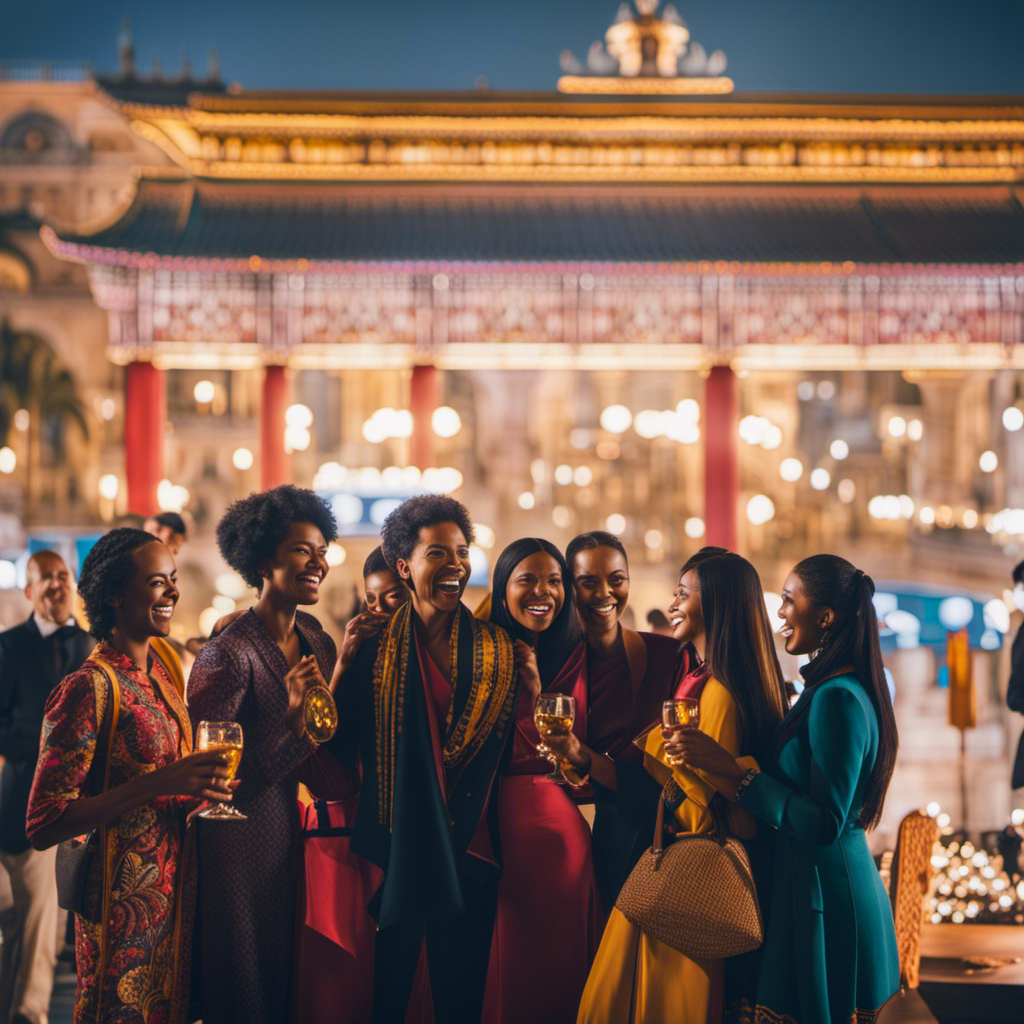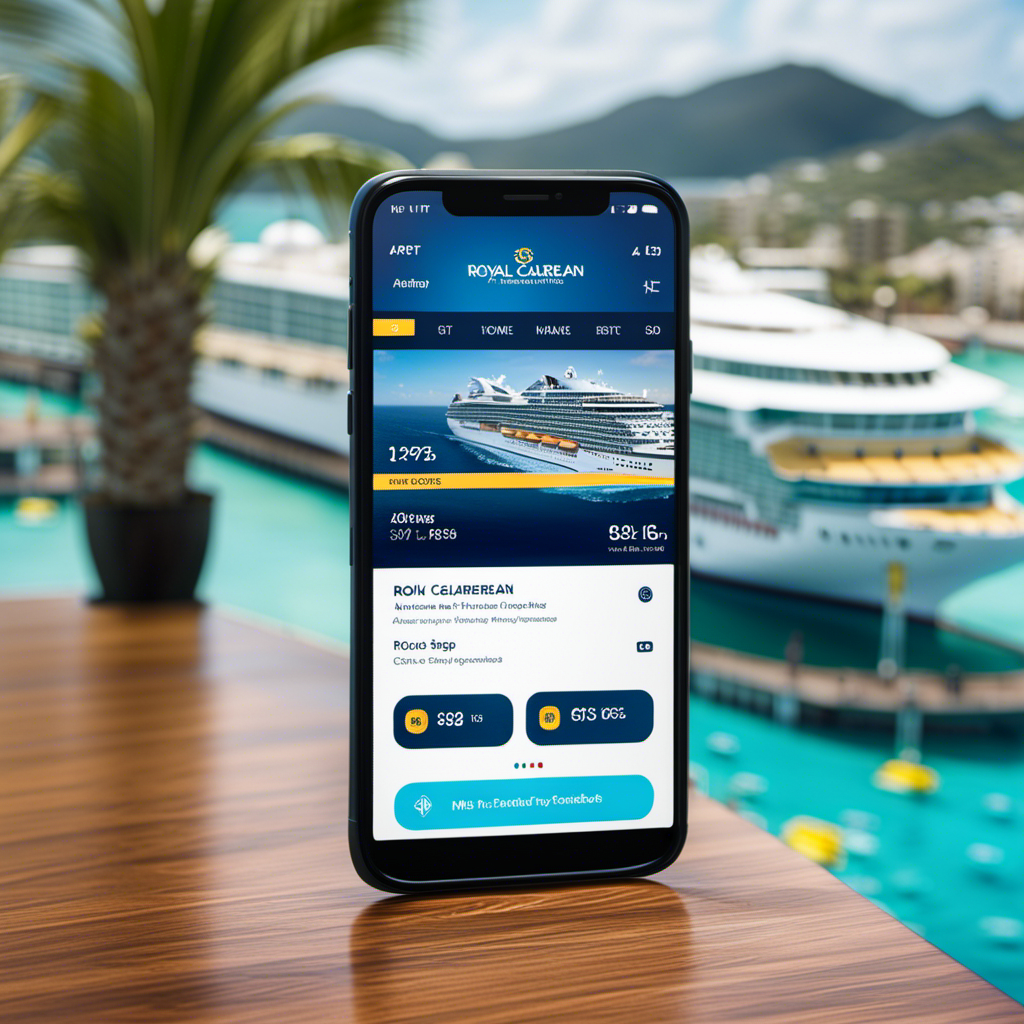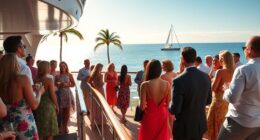I’m thrilled to share the amazing achievement that Jamaica’s tourism industry has reached, attaining unprecedented heights!
Visitor arrivals have skyrocketed, surpassing last year’s numbers, and the Jamaica Tourist Board expects to host a staggering 4.2 million tourists by the end of 2017.
The cruise sector is also booming, with a 4.9% increase in passengers. To support this growth, the Cruise Jamaica initiative is developing new ports, hotels, and attractions.
This tourism boom has had a profound impact on the Jamaican economy, creating job opportunities and supporting infrastructure development.
Get ready to explore Jamaica’s incredible success story!
Key Takeaways
- Jamaica’s tourist arrivals have reached record highs, with a projected 4.2 million visitors by the end of 2017.
- The cruise sector in Jamaica is experiencing significant growth, with a 4.9% increase in cruise passengers from January to July 2017.
- Jamaica aims to increase the number of cruise ship calls by developing new cruise ports, hotels, and attractions.
- The thriving tourism industry in Jamaica has a positive impact on the economy, contributing to revenue, job creation, and infrastructure development.
Record-Breaking Tourist Arrivals
I can’t believe the number of tourist arrivals in Jamaica has reached a record high this year. It’s truly remarkable to see the growth and success of the tourism industry in my beautiful country.
With projections of hosting 4.2 million visitors by the end of 2017, we have surpassed last year’s record of 3.84 million visitors. This surge in tourist arrivals has brought numerous economic benefits and increased tourism revenue to Jamaica.
The increased tourist spending contributes significantly to our country’s revenue, supporting the growth and development of our infrastructure and services. Moreover, the thriving tourism sector has created job opportunities for locals, further boosting our economy.
It’s evident that the record-breaking tourist arrivals have had a positive impact on Jamaica’s economy, solidifying our position as a top tourist destination.
Projected Visitor Numbers for 2017
Projected to host 4.2 million visitors by the end of 2017, we are expecting a significant increase in tourist numbers. This surge in visitors is not only a testament to Jamaica’s allure as a destination, but also highlights the positive impact it has on the economy.
With more tourists comes increased visitor spending, which contributes to the country’s revenue and supports the development of tourism infrastructure. The growth in Jamaica’s tourism industry has paved the way for the expansion of hotels, cruise ports, and attractions, creating job opportunities for locals and boosting the overall economy.
As the numbers continue to rise, it is evident that Jamaica’s commitment to enhancing its tourism offerings is paying off, solidifying its position as a top destination in the Caribbean.
Growth of Jamaica’s Cruise Sector
Experiencing significant growth, the cruise sector in Jamaica has seen a 4.9% increase in cruise passengers from January to July 2017 compared to the same period last year. This growth is a reflection of the thriving cruise industry in Jamaica.
Here are four key points that highlight the growth of Jamaica’s cruise sector:
-
The number of cruise ship calls in Jamaica has been steadily increasing, attracting more tourists to the country’s shores.
-
The Cruise Jamaica initiative has been instrumental in developing new cruise ports, hotels, and attractions, enhancing the overall cruise experience.
-
With five cruise ports, including Montego Bay, Falmouth, Ocho Rios, Kingston, and Port Antonio, Jamaica offers a diverse range of destinations for cruise passengers to explore.
-
The Jamaica Tourist Board has been actively promoting cruise tourism, aiming to further increase the number of cruise ship calls and attract more cruise passengers to the country.
The growth of Jamaica’s cruise sector not only boosts the tourism industry but also has a positive impact on the country’s economy, creating job opportunities and contributing to revenue generation.
Increase in Cruise Passengers
The increase in cruise passengers has had a significant impact on the economy of Jamaica. With the growing popularity of cruise travel, Jamaica has seen a rise in the number of cruise ship calls to its ports.
This increase in cruise ship calls has not only brought more tourists to the country, but it has also had a positive impact on local communities. The influx of cruise passengers has led to increased spending in the local economy, benefiting businesses and creating job opportunities for locals.
Additionally, the growth in cruise tourism has spurred the development of new ports, hotels, and attractions, further contributing to the overall economic growth of Jamaica.
Overall, the increasing number of cruise ship calls has been instrumental in boosting the economy and improving the livelihoods of local communities in Jamaica.
Cruise Jamaica Initiative
I’m excited about the Cruise Jamaica Initiative and its potential to attract more cruise passengers to the country. The initiative focuses on developing cruise ship infrastructure, including new cruise ports, hotels, and attractions. This will give tourists more options and reasons to visit Jamaica.
The goal is to increase the number of cruise ship calls and ultimately boost the tourism industry.
The economic benefits of this initiative are substantial. With the record-breaking tourist arrivals and the growth of the cruise sector, Jamaica’s economy is thriving. Increased tourist spending contributes to the country’s revenue and creates job opportunities for locals. The growth in tourism also supports the development of infrastructure and services, further benefiting the economy.
Overall, the Cruise Jamaica Initiative is a strategic move that will not only attract more cruise passengers but also bring about positive economic changes for Jamaica.
Developing New Cruise Ports and Attractions
The Cruise Jamaica Initiative is focusing on developing new cruise ports and attractions to attract more cruise passengers to Jamaica. This is a crucial step in increasing the number of cruise ship calls and further boosting the growth of the country’s cruise sector.
However, there are several development challenges that need to be addressed in order to successfully expand Jamaica’s tourism infrastructure.
One of the main challenges is the need for adequate infrastructure to accommodate larger cruise ships. This includes the construction of new docking facilities and the expansion of existing ports. Additionally, there is a need for the development of new attractions and amenities to enhance the cruise passenger experience. This includes the creation of new shopping areas, restaurants, and entertainment venues.
Overall, the development of new cruise ports and attractions is essential for Jamaica to continue its growth in the cruise sector. By addressing the development challenges and investing in tourism infrastructure, the country can further capitalize on the economic benefits of the thriving tourism industry.
Jamaica’s Five Cruise Ports
With five cruise ports, including Montego Bay, Falmouth, Ocho Rios, Kingston, and Port Antonio, there are plenty of options for cruise passengers visiting Jamaica. The country’s development plans for its tourism infrastructure have been focused on expanding and improving these ports to accommodate the growing number of cruise ship calls.
Jamaica’s cruise sector has experienced significant growth, with an increase of 4.9% in cruise passengers from January to July 2017 compared to the previous year. The Cruise Jamaica initiative, launched to support this growth, aims to develop new cruise ports, hotels, and attractions. By attracting more cruise passengers, Jamaica’s economy benefits from increased tourist spending, job opportunities, and the development of infrastructure and services.
The Jamaica Tourist Board plays an active role in promoting cruise tourism and ensuring a positive experience for visitors.
Positive Impact on Jamaica’s Economy
The positive impact of Jamaica’s booming tourism industry extends beyond just the increase in visitor arrivals and cruise sector growth. One of the key benefits is the significant impact on the country’s economy. With record-breaking tourist numbers and increased cruise ship calls, Jamaica is experiencing a surge in tourist spending, which directly contributes to the country’s revenue.
This influx of funds allows for the development of infrastructure and services, further enhancing the tourism experience for visitors. The thriving tourism sector also creates job opportunities for locals, providing a boost to employment rates.
With the continuous growth of the industry, Jamaica’s economy is reaping the benefits and positioning itself as a top tourist destination.
Job Opportunities in the Tourism Industry
I’ve noticed an increase in job opportunities within the tourism sector. The growth in Jamaica’s tourism industry has led to the creation of more jobs, providing employment opportunities for the local workforce.
Here are some key points to consider regarding job creation and the tourism workforce:
- The record-breaking tourist arrivals and cruise sector growth have contributed to the expansion of the tourism industry in Jamaica.
- Increased tourist spending has boosted the country’s revenue and supported the development of infrastructure and services.
- The tourism industry plays a crucial role in job creation, offering employment opportunities in various sectors such as hospitality, transportation, and entertainment.
- The Jamaica Tourist Board actively promotes the tourism sector and works towards attracting more tourists, thereby creating more job opportunities for the local population.
Overall, the thriving tourism industry in Jamaica has not only boosted the economy but also provided significant job opportunities for the tourism workforce.
Reputable Source: Porthole Cruise and Travel Magazine
Reading Porthole Cruise and Travel Magazine provides me with the latest news and features on voyages, new ships, and the best destinations. As a reputable publication in the cruise and travel industry, Porthole Cruise and Travel Magazine has a significant influence on cruise tourism.
Through its in-depth articles and expert insights, the magazine plays a crucial role in shaping the preferences and decisions of cruise enthusiasts. With its availability worldwide through digital subscription, the magazine has expanded its readership and reach.
The impact of digital subscription on Porthole Cruise and Travel Magazine’s readership is immense, as it allows readers from all around the world to access the magazine’s content conveniently. This has not only increased the magazine’s popularity but also contributed to the growth and promotion of cruise tourism globally.
Frequently Asked Questions
What Are Some Popular Tourist Attractions in Jamaica?
Popular tourist attractions in Jamaica include the Dunn’s River Falls, Bob Marley Museum, and Martha Brae River. These must-visit places offer a mix of natural beauty, cultural heritage, and adventure, making them ideal for both relaxation and exploration.
How Does the Tourism Industry in Jamaica Compare to Other Caribbean Countries?
In terms of Caribbean tourism rankings, the tourism industry in Jamaica has seen significant growth compared to other countries. This growth has propelled Jamaica to new heights, solidifying its position as a top tourist destination in the region.
What Are Some Challenges That Jamaica’s Tourism Industry Faces?
Some challenges that Jamaica’s tourism industry faces include maintaining sustainable growth, minimizing the environmental impact, and ensuring that the benefits of tourism reach local communities and contribute to their development.
How Has the Increase in Tourist Arrivals Impacted Local Communities in Jamaica?
The increase in tourist arrivals in Jamaica has had a positive impact on local communities. It has boosted the economy, created job opportunities, and supported the preservation of the country’s rich cultural heritage.
Can You Provide Some Examples of the Infrastructure and Services That Have Been Developed as a Result of the Tourism Industry in Jamaica?
Infrastructure development and service enhancements in Jamaica’s tourism industry have led to the creation of new cruise ports, hotels, and attractions. These improvements attract more cruise passengers, contribute to the economy, and provide job opportunities for locals.
Claire, a creative soul with an unquenchable thirst for storytelling, is an integral part of the Voyager Info team. As a dedicated writer, she weaves captivating narratives that transport readers to enchanting cruise destinations and beyond.
Claire’s love affair with writing began at an early age when she discovered the magic of words and their ability to craft worlds and emotions. Her innate curiosity led her to explore various literary genres, but it was travel writing that truly captured her heart. Drawing inspiration from her own globetrotting adventures and encounters with diverse cultures, Claire embarked on a journey to become a travel writer par excellence.

